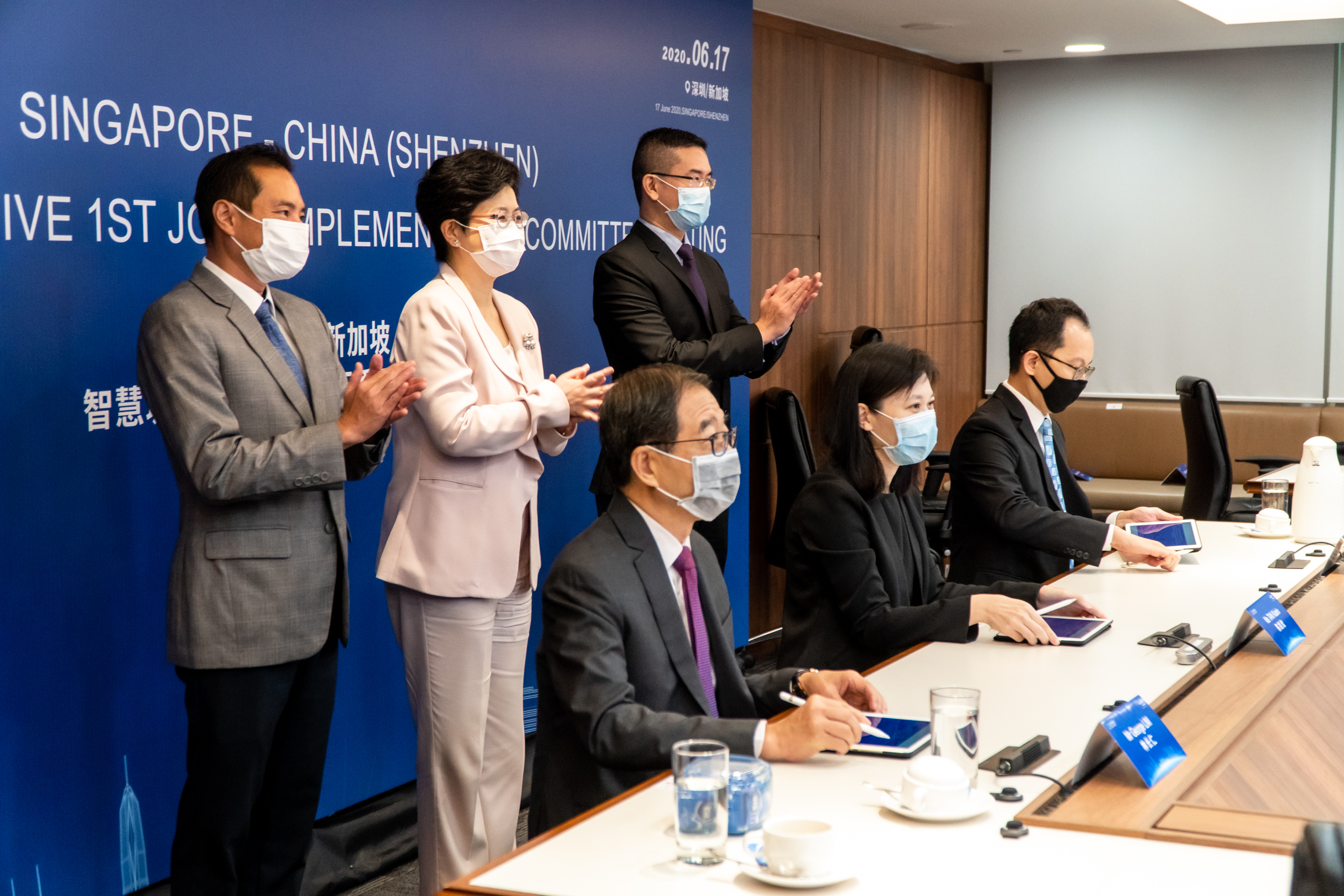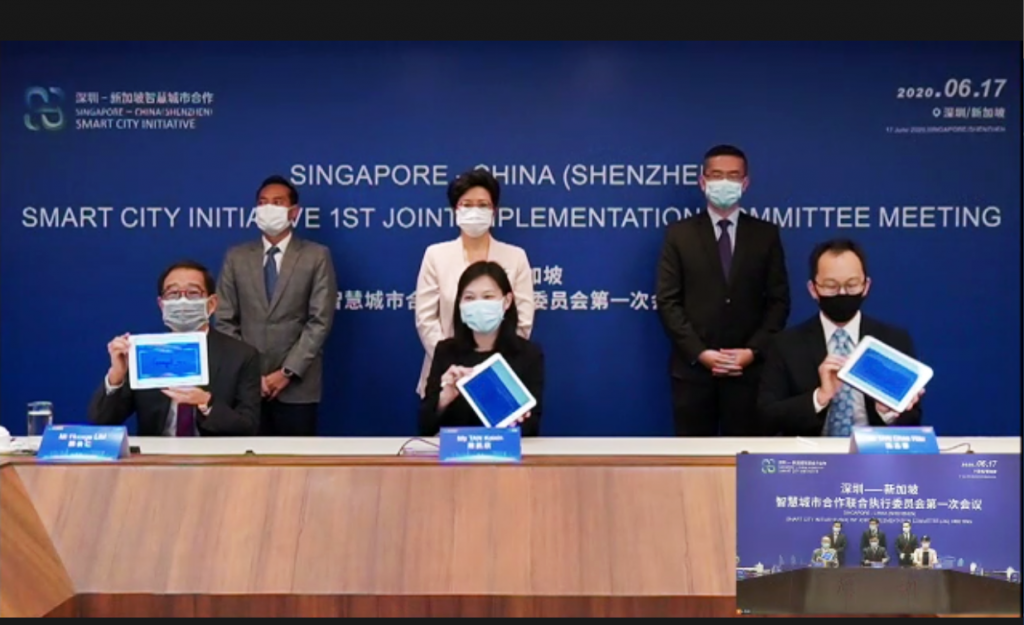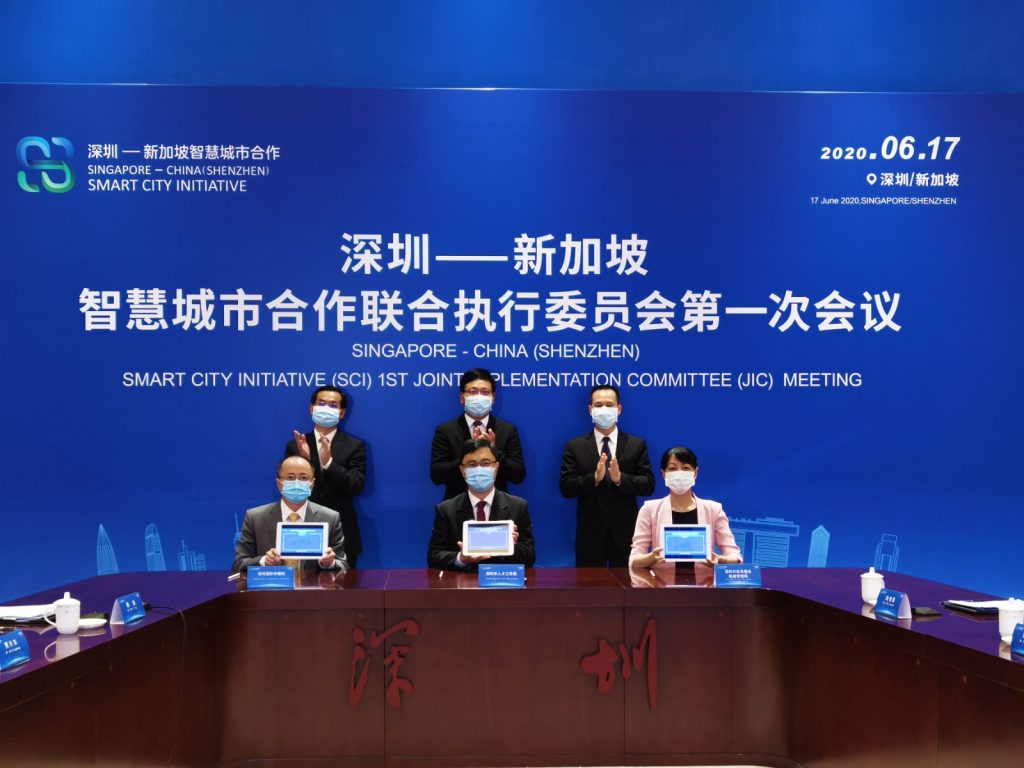SIMC and the Shenzhen Court of International Arbitration (SCIA) Establish International Dispute Resolution Service for Cross-border Commercial Projects under Singapore-China (Shenzhen) Smart City Initiative
SINGAPORE — The Singapore International Mediation Centre on Wednesday June 17, 2020, signed a Memorandum of Understanding with the Shenzhen Court of International Arbitration (SCIA) – also known as the South China International Economic and Trade Arbitration Commission – to support business partnerships and projects under the Singapore-China (Shenzhen) Smart City Initiative[1].
The MOU provides a platform for Alternative Dispute Resolution (ADR) mechanisms, enabling businesses to resolve commercial disputes in a time- and cost-efficient manner, thereby safeguarding the success of partnerships and projects under the Initiative. It gives investors and businesses confidence that any differences can be resolved effectively without court litigation, allowing parties to maintain valued relations and enjoy new growth opportunities.

SIMC Chairman Mr George Lim SC (front, seated) signs the MOU on behalf of SIMC. Photo: IMDA
Leveraging each organisation’s strengths in ADR, SIMC and SCIA will offer a ‘mediation-arbitration’ (med-arb) service. This means that where a mediation is administered by SIMC, any resulting mediated settlement agreement may be recorded by the SCIA as an arbitral award, in accordance with SCIA Arbitration Rules. Hence, parties who mediate with SIMC have the added advantage of being able to effectively enforce the terms of their mediated settlement agreement in China and elsewhere, and obtain greater finality of outcomes.
Under the MOU, SCIA will also recognise SIMC as its recognised mediation institution. This means that SCIA will refer cases to be resolved through mediation at SIMC in the appropriate circumstances.

SIMC Chairman Mr George Lim SC (far left, seated) signs the MOU on behalf of SIMC at a virtual signing ceremony on June 17, 2020. Eight other MOUs were signed
on the sidelines of the first Joint Implementation Committee (JIC) meeting. Photo: SIMC.

President of SCIA Dr Xiaochun Liu (far left, seated) signs the MOU on behalf of SCIA. Photo: SCIA.
The MOU responds to growing insight that users prefer hybrid dispute resolution mechanisms rather than standalone mediation or arbitration. According to research from the Singapore International Dispute Resolution Academy (SIDRA), hybrid dispute resolution mechanisms “can offer certain benefits of mediation, such as focus on preserving the business relationship in addition to cost and efficiency advantages, while at the same time promising finality and enforceability commonly associated with international arbitration”[2].
The MOU was signed virtually today, between SIMC Chairman George Lim SC and Dr Xiaochun Liu, President of SCIA, during the Singapore-China (Shenzhen) Smart City Initiative 1st Joint Implementation Committee Meeting. It was witnessed by the Permanent Secretary of the Ministry of Communications and Information Yong Ying-I, Deputy Secretary of CPC Shenzhen Municipal Committee and Mayor of Shenzhen Municipality, Chen Rugui, as well as Tan Kiat How, Chief Executive Officer of the Info-Communications Media Development Authority of Singapore (IMDA); Nie Xinping, Vice Mayor of Shenzhen Municipality and Director General of the Development and Reform Commission of Shenzhen Municipality; Lew Chuen Hong, Deputy Chief Executive Officer (Development) of IMDA; and Zeng Pai, Secretary General of the Shenzhen Municipal People’s Government.
Mr Lim said, “SIMC is proud to be part of the Singapore-China (Shenzhen) Smart City Initiative. The collaboration with the Shenzhen Court of International Arbitration (SCIA) will deepen the legal cooperation between Singapore and China. The recommendation of SIMC’s services to SCIA’s users is testament to our track record. Furthermore, the conversion of SIMC’s mediated settlement agreements to SCIA arbitral awards will provide a valuable option for parties seeking to enforce their awards in China and elsewhere.”
SIMC CEO Chuan Wee Meng said, “The ability to enforce the outcome of a dispute is of key concern to businesses that engage in cross-border activities. While mediated settlement agreements are generally complied with by parties, an enforceable mediated settlement agreement provides strong psychological confidence to parties entering into the mediation. This is why the ability to convert SIMC’s mediated settlement agreements to SCIA arbitral awards is a gamechanger – it gives parties the confidence that an SIMC mediated settlement agreement can be effectively enforced in China and elsewhere as an arbitral award. We are honoured to be signing this MOU with SCIA.”
Dr Liu pointed out, “The mediation and arbitration services provided by SCIA have resolved a large number of transnational commercial disputes worldwide. It’s great to see that Singapore has strongly supported the development of international arbitration and international commercial mediation in recent years. Last year, SCIA attended the signing ceremony of the Singapore Convention on Mediation. As the Convention may take some time to gain further traction, the establishment of the ‘med-arb’ service with SIMC will be of great significance to companies from China, Singapore and beyond. This will facilitate cross-border trade, and help these companies resolve disputes in an efficient, harmonious, cost-effective and enforceable way.”
[1] The Singapore-China (Shenzhen) Smart City Initiative connects business ecosystems and bolsters ties between the people and businesses of Singapore and Shenzhen, enabling both sides to expand in each other’s markets and benefit from opportunities in Southeast Asia and the Greater Bay Area. It was formalised at the 15th Joint Council for Bilateral Cooperation (JCBC) meeting in October 2019.
[2] See International Dispute Resolution Survey: Currents of Change 2019 Preliminary Report at p 21, retrieved from https://sidra.smu.edu.sg/sites/sidra.smu.edu.sg/files/documents/SIDRA2019_IDR_Survey_Preliminary_Report.pdf

